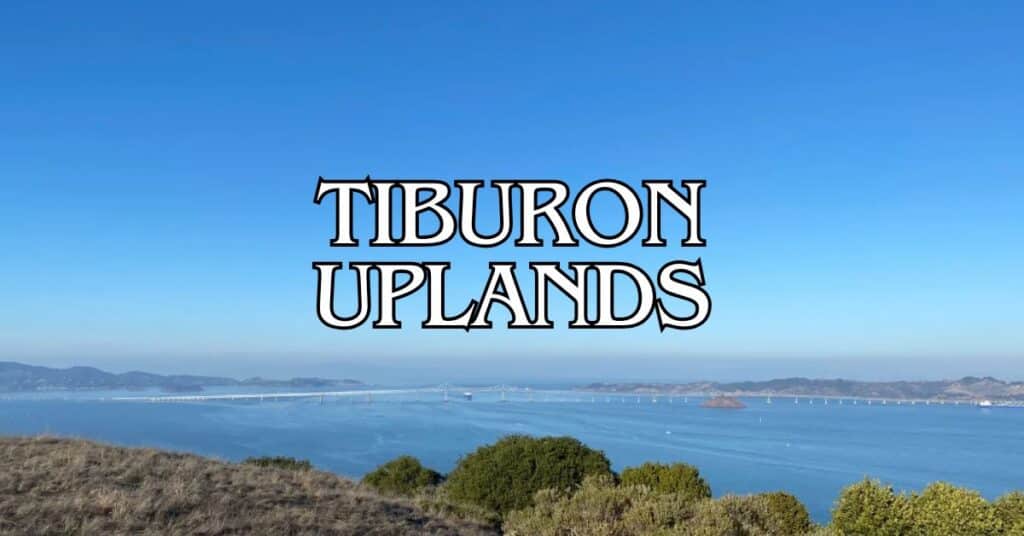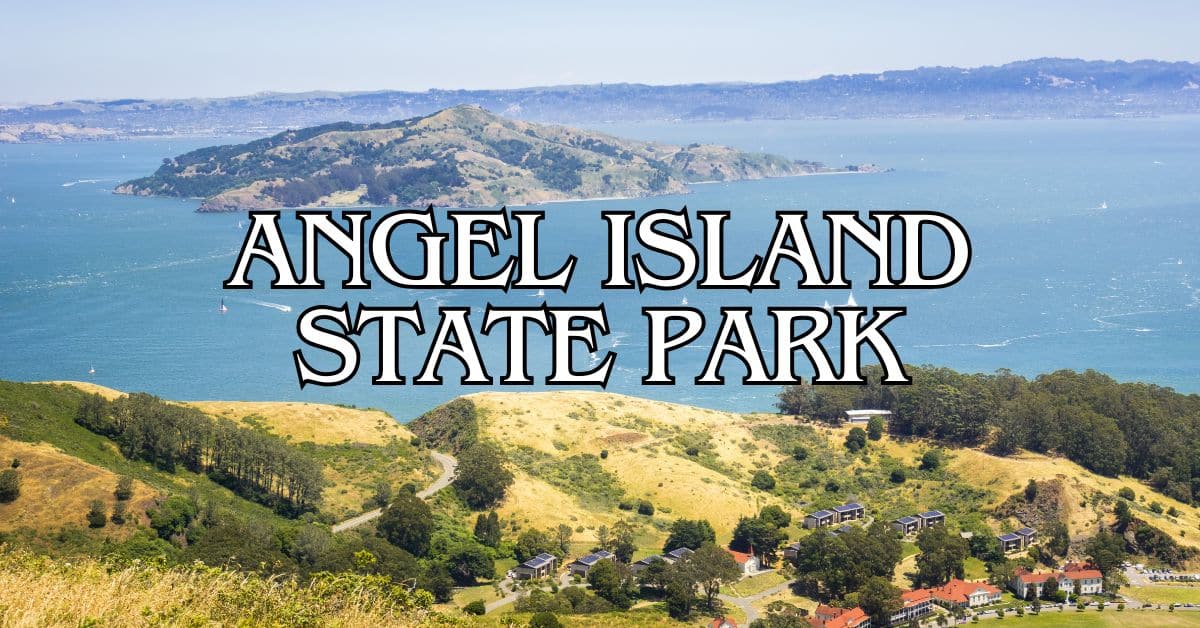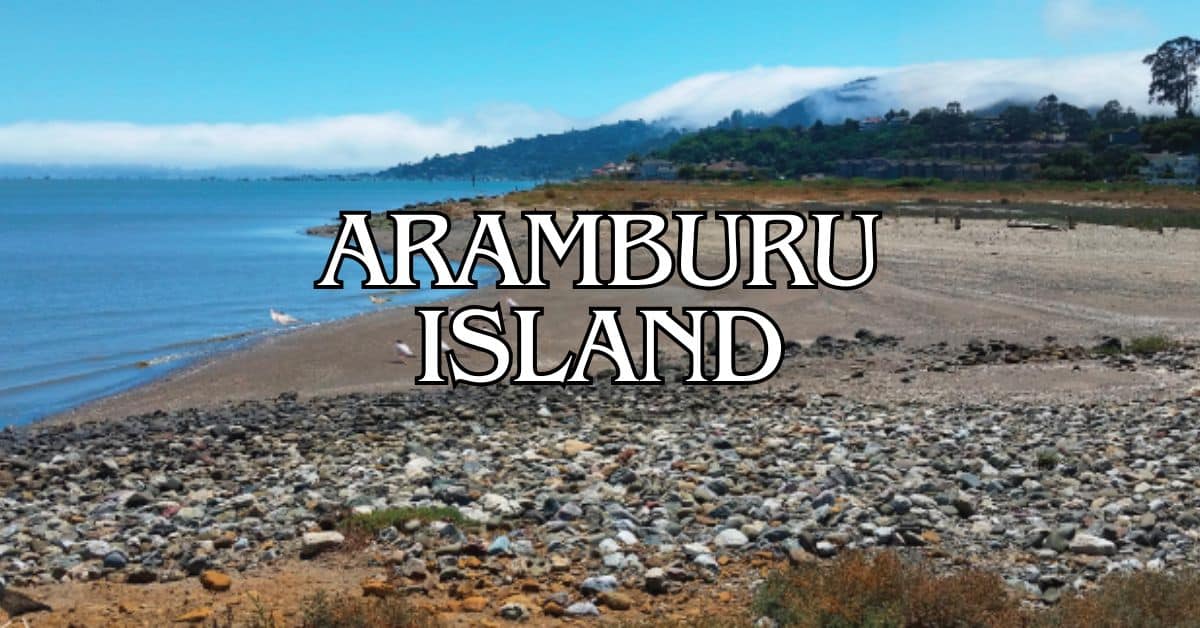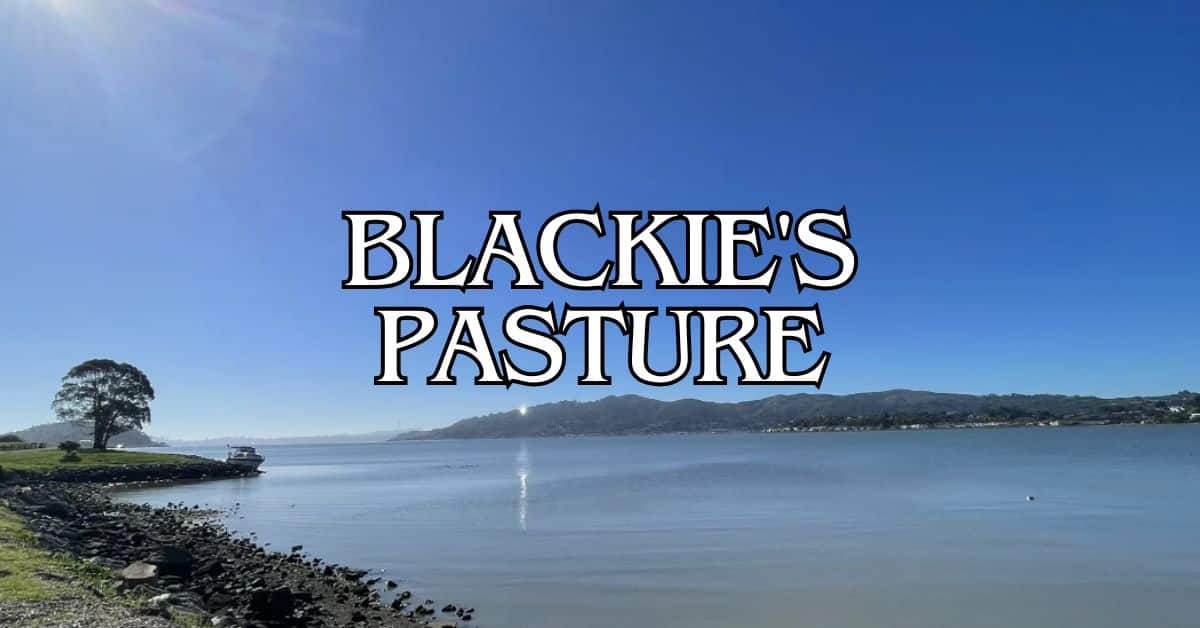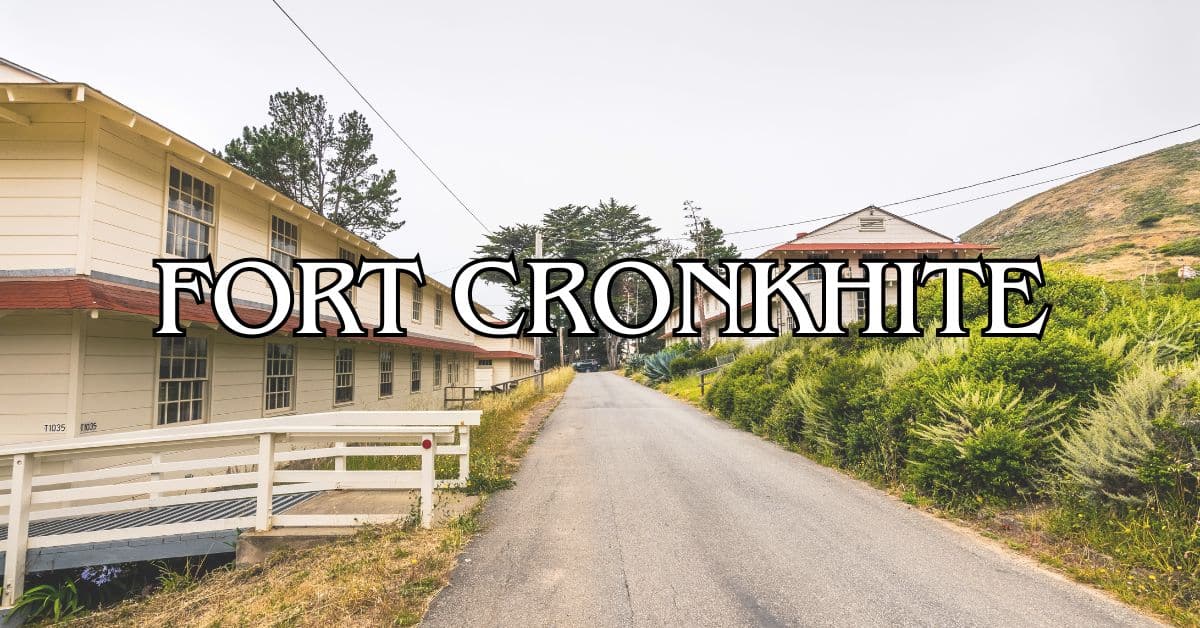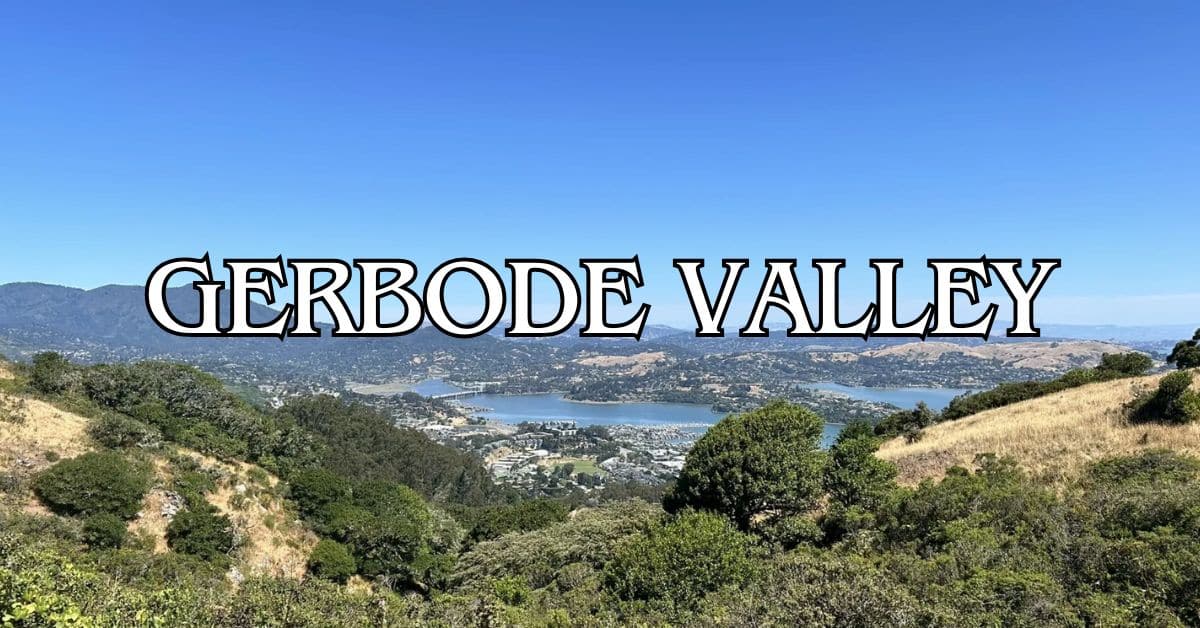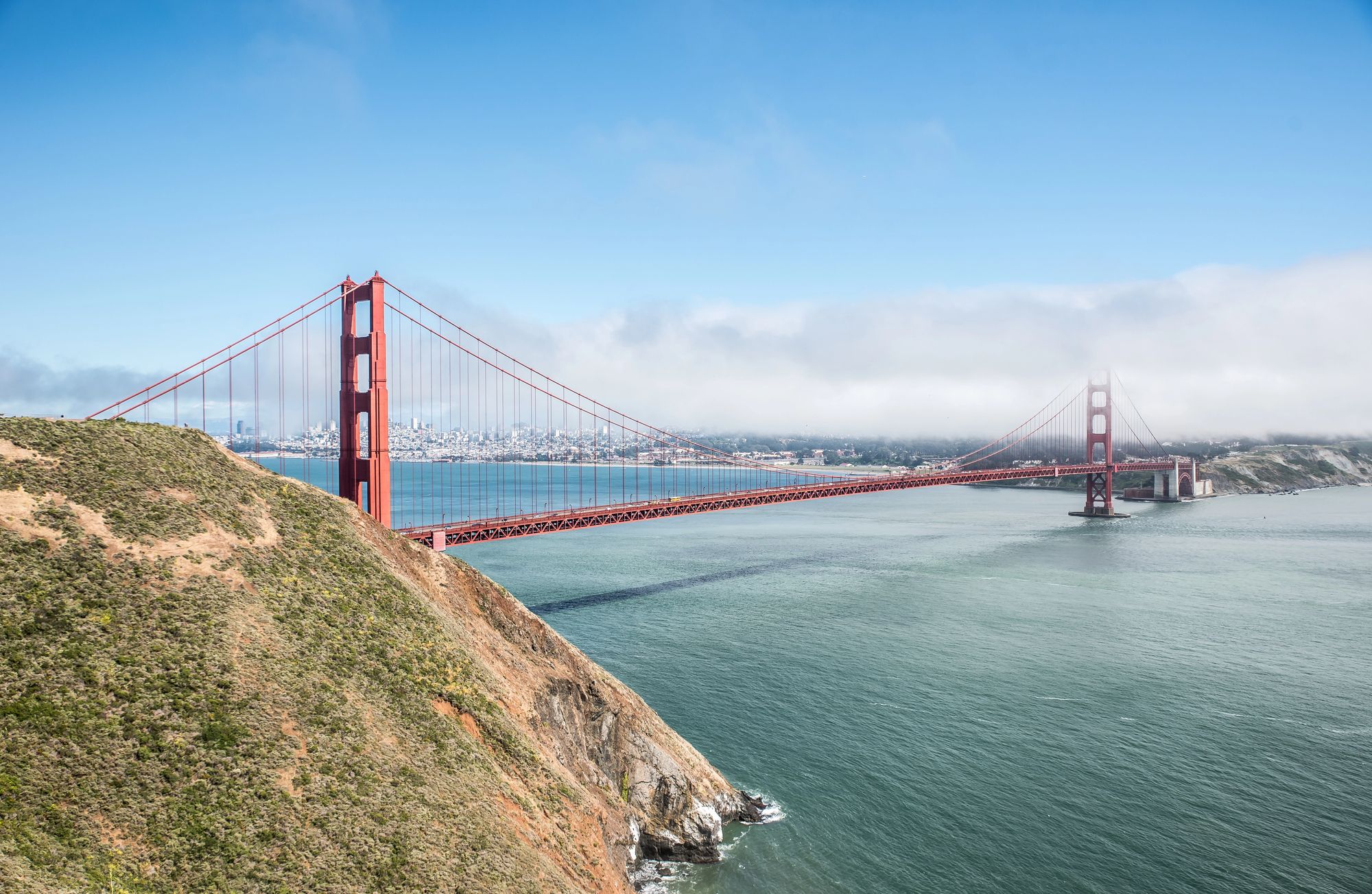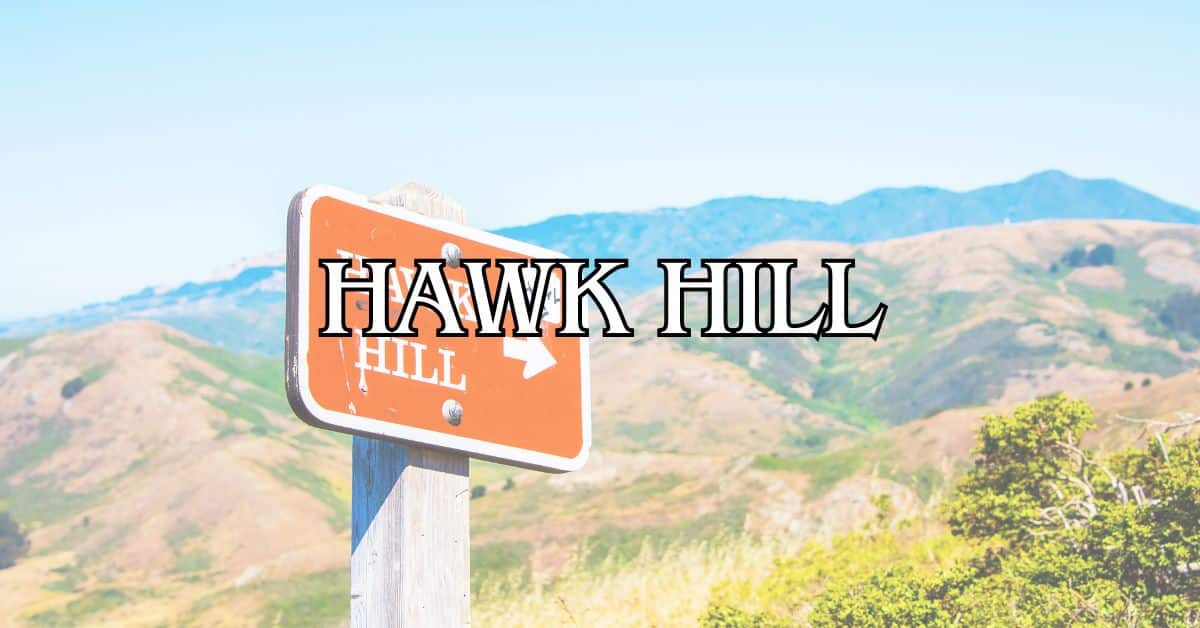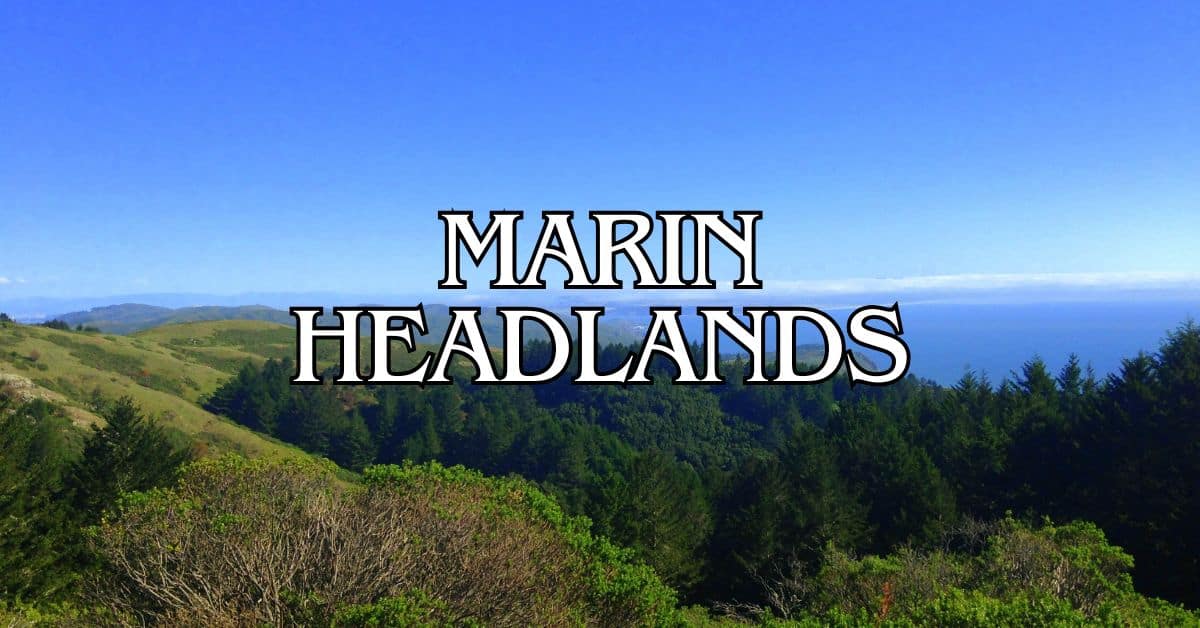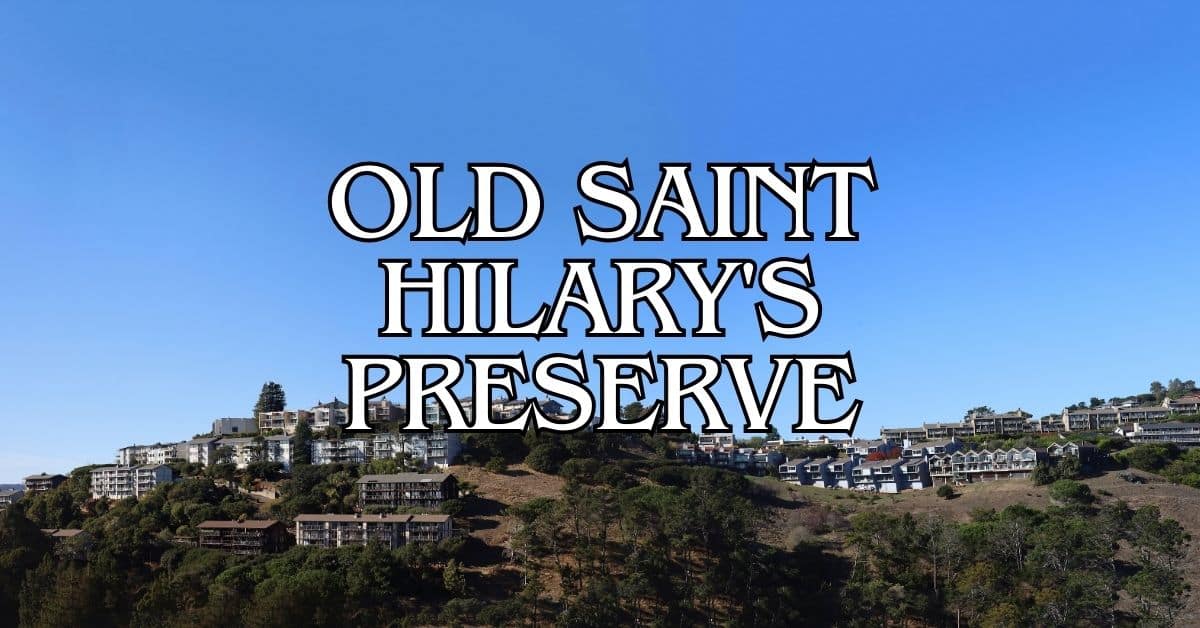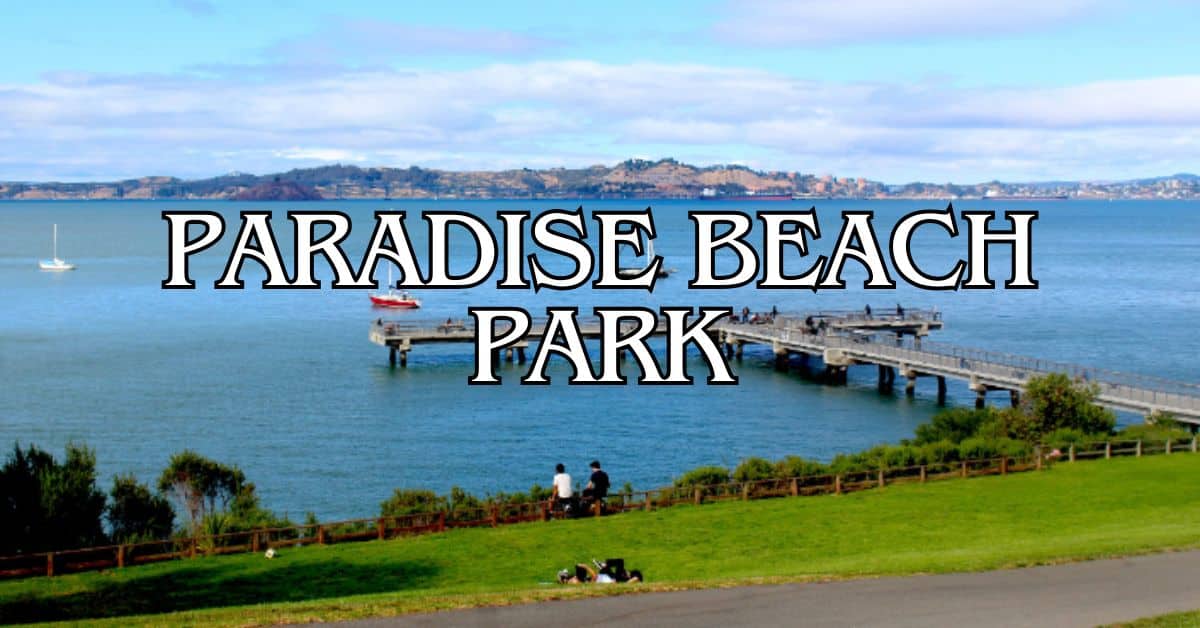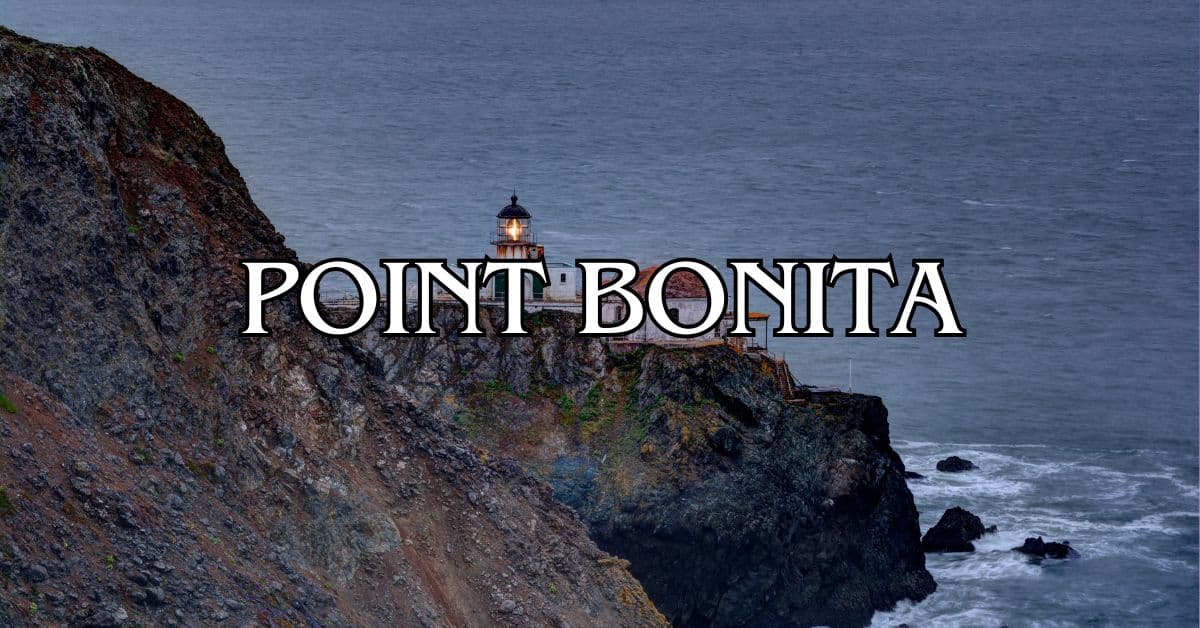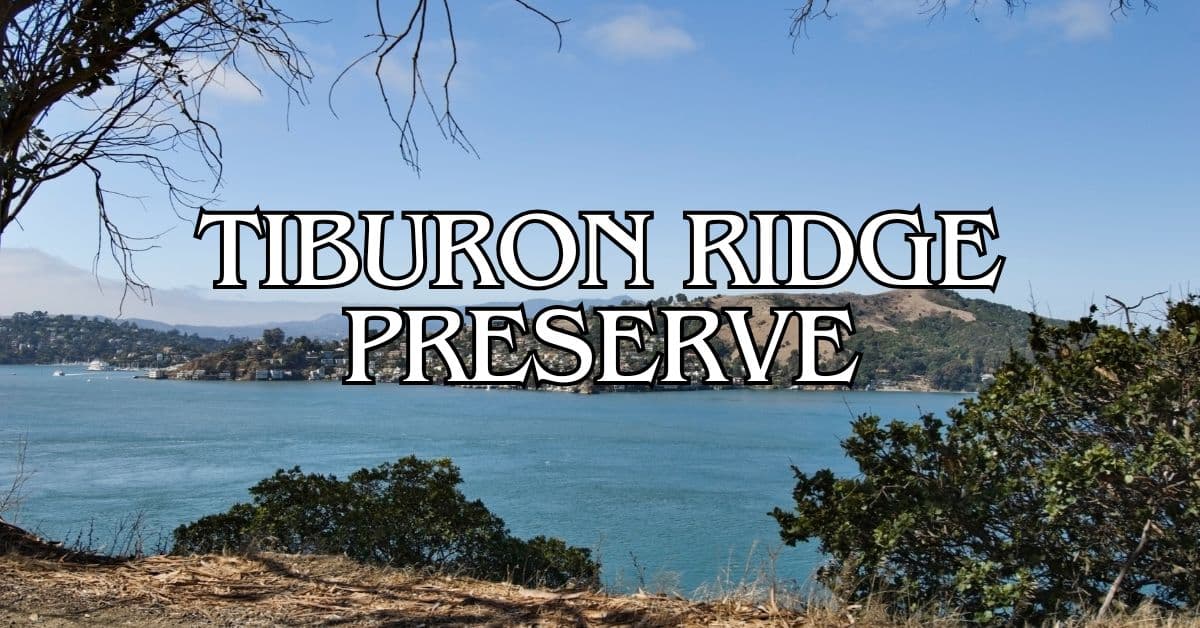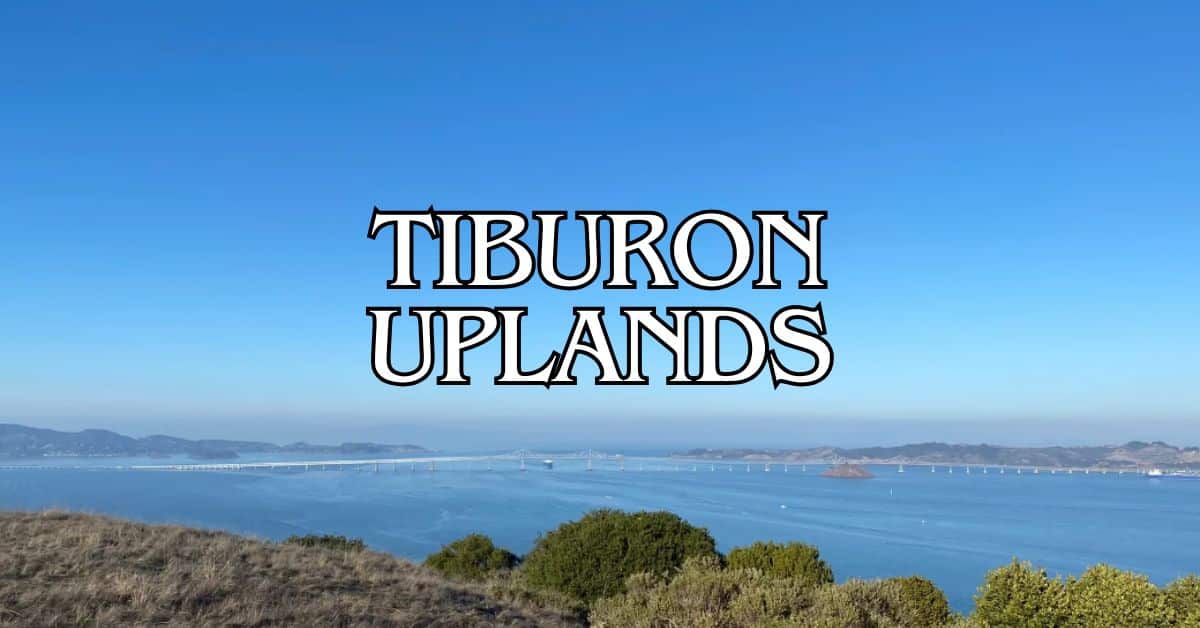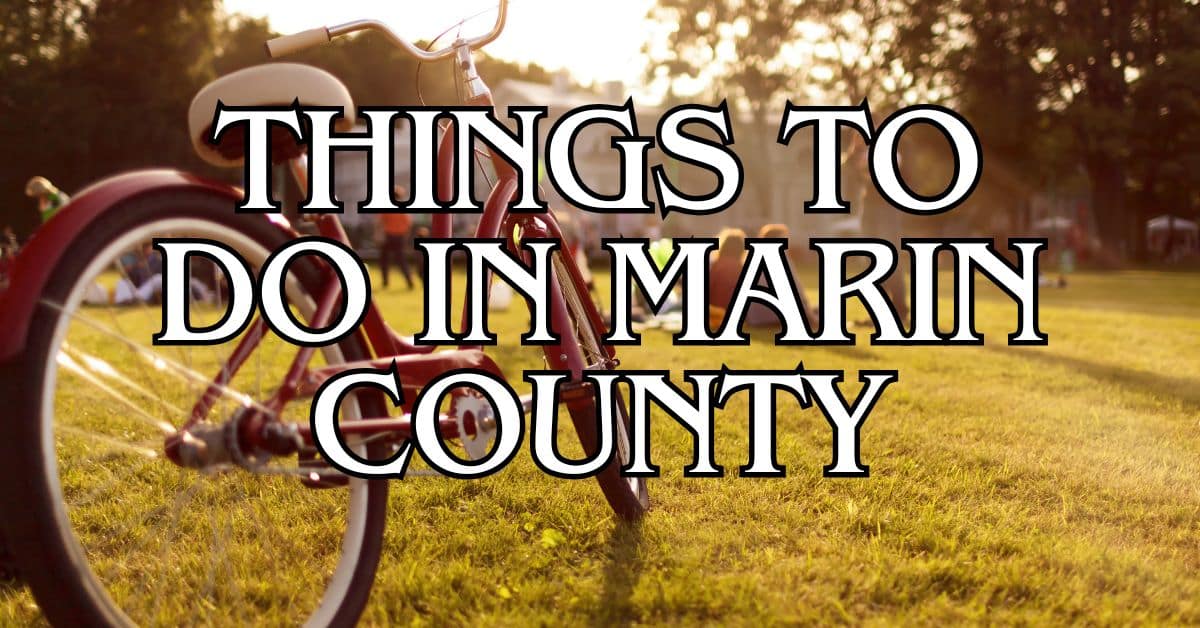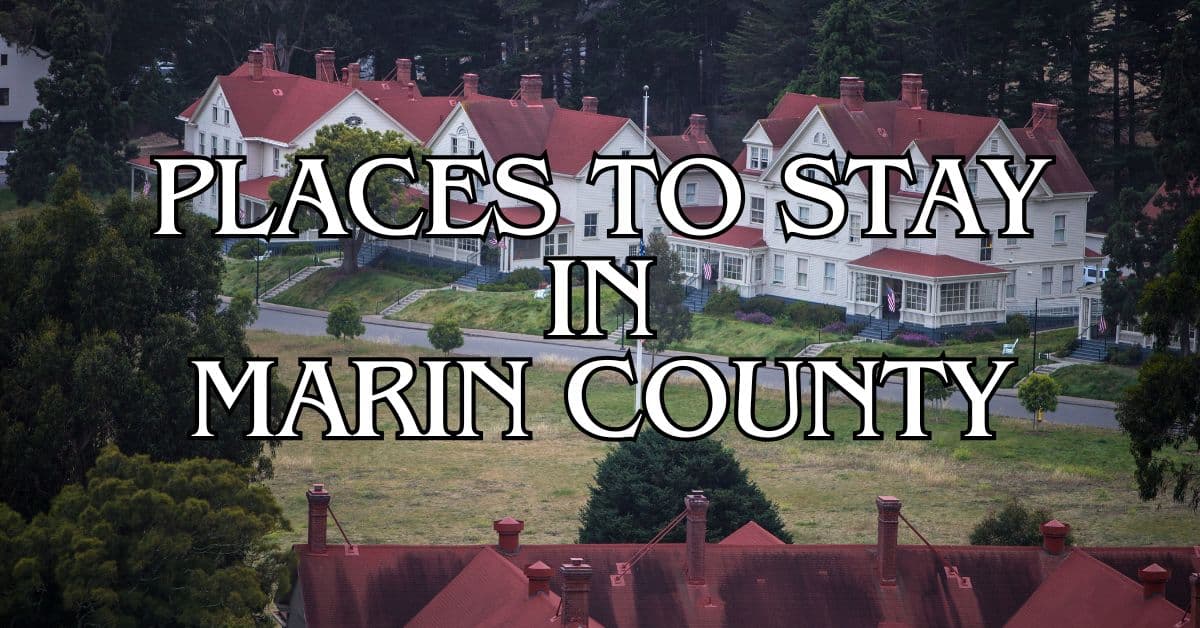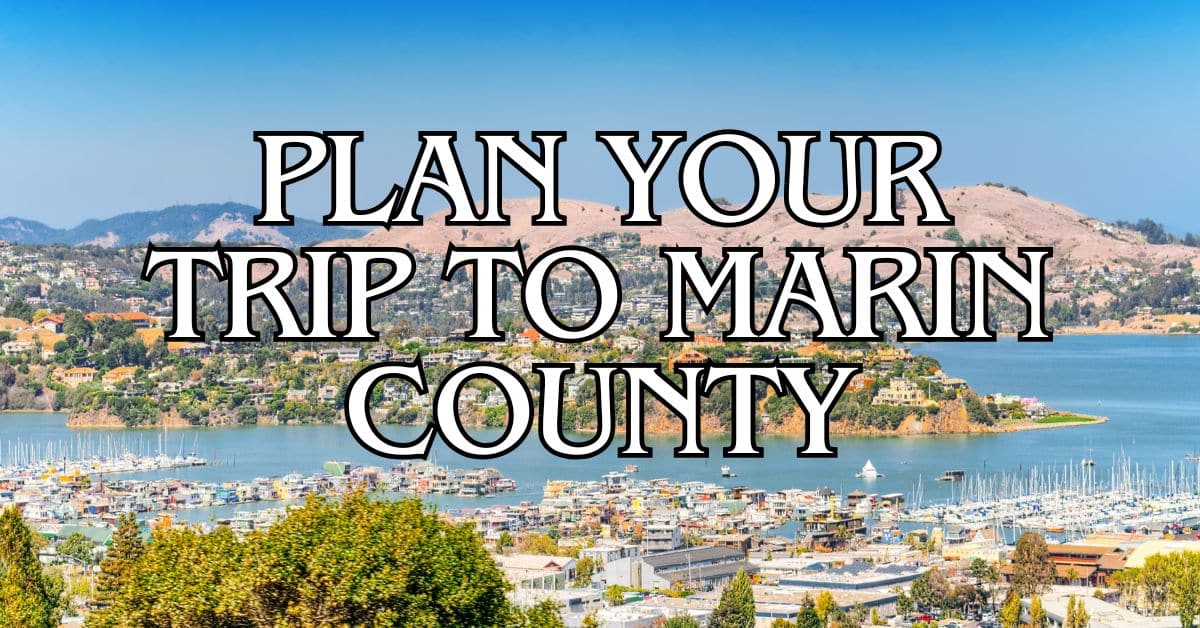Tucked away in a quiet canyon on the Tiburon Peninsula, Tiburon Uplands Nature Preserve feels like a peaceful break from the daily grind. This 24-acre wooded spot has a 0.7-mile loop trail twisting through dense forest and rocky ground. The preserve offers a sweet mix of natural beauty, moderate hiking, and stunning views of Marin County landscapes.
You’ll find this hidden gem along Paradise Drive, where limited parking marks the entrance to this less-visited natural area. The trails can get narrow and steep, so good shoes are a must. Tiburon Uplands is smaller than some Marin County parks, but it packs a lot of beauty into a quick visit.
Discover hand-picked hotels and vacation homes tailored for every traveler. Skip booking fees and secure your dream stay today with real-time availability!
Browse Accommodations Now
Dogs on leash are welcome here, so it’s a nice excuse to bring your pup along. Shaded paths wind through the canyon, with a few benches set up just right for pausing and soaking it all in. Because of its location, the preserve stays cooler than a lot of other local trails, especially when summer heat hits.
Overview of Tiburon Uplands Nature Preserve
Tiburon Uplands Nature Preserve is a woodland retreat covering 24 acres in a peaceful canyon on the Tiburon peninsula.
History and Establishment
Tiburon Uplands became a protected preserve to save one of the last natural woodlands on the peninsula. With so much development nearby, this patch of land is a real ecological sanctuary.
It sits right off Paradise Drive, a scenic road curving along the east side of Tiburon. Locals and conservation groups worked to keep this canyon public, so everyone can enjoy it now and in the future.
Marin County Parks manages the preserve, keeping up the trails and balancing access with habitat protection.
Geographical Features
The preserve hugs a quiet, shaded canyon—way different from the open, sunny hills you see elsewhere on the peninsula. The 0.7-mile loop trail cuts through dense woodland, running along the canyon’s edge.
The trail’s narrow, rocky, and can get steep, making the hike feel more personal than some of the wider, busier trails in Marin.
Thick tree cover keeps the canyon cool. Bay laurel, oak, and madrone fill the area, giving shelter to wildlife and a calm vibe for hikers.
Small streams sometimes trickle through during rainy months, which adds to the preserve’s charm.
Conservation Efforts
By keeping this canyon wild, the preserve protects native plant communities and wildlife. Rangers keep an eye on erosion and tackle invasive species to help native plants thrive.
Visitors need to leash their dogs and stick to marked trails—simple rules that help keep the ecosystem healthy.
Benches are placed where you’d want to stop and rest, but also where they won’t harm the landscape.
Getting to Tiburon Uplands
Getting to Tiburon Uplands is pretty straightforward, whether you’re driving or taking public transit. The preserve sits in Marin County, just north of San Francisco, a quick trip across the Golden Gate Bridge.
Public Transportation Options
You can reach Tiburon by public transit from San Francisco or elsewhere in Marin. From San Francisco, hop on the Blue and Gold Fleet ferry at Pier 41—it’s about a 30-minute ride with killer Bay and bridge views.
Or, take BART to El Cerrito del Norte, then catch Golden Gate Transit bus 40 to Tiburon.
Marin Transit Route 219 serves Tiburon on weekdays, connecting from the Marin City Transit Hub.
Once you’re in downtown Tiburon, grab a taxi or rideshare to the preserve. No buses go directly to the entrance.
Driving and Parking Information
Driving from San Francisco? Cross the Golden Gate Bridge north on Highway 101, then take the Tiburon Boulevard exit (about 8 miles after the bridge).
Head east on Tiburon Boulevard into downtown, where the road becomes Paradise Drive. Stay on Paradise for about 2 miles until you spot the preserve entrance.
Limited Parking Available:
- Small gravel lot at the trailhead
- Fits maybe 3-4 cars
- No parking fee
- Weekends fill up fast—arrive early if you can
During summer weekends and holidays, parking disappears quickly. Carpool or show up before 9am if you want a spot.
Access Points and Trailheads
There’s just one main access point off Paradise Drive. Look for a small wooden sign—it’s easy to miss, so slow down as you approach.
The main trailhead starts right at the parking area, immediately dipping into a shady bay and oak forest. The trail is narrow but well-kept, climbing gently for about 0.3 miles before you hit some nice viewpoints.
The preserve is open sunrise to sunset, every day. No entrance fee, but keep these in mind:
- No dogs allowed on trails
- Stay on the paths
- Pack out your trash
- No bathrooms or water at the trailhead
If you have mobility concerns, be aware there’s uneven ground and a few steeper spots.
Top Hiking Trails and Routes
Tiburon Uplands Nature Preserve has a handful of well-kept trails that really show off the best of this Marin County hideout. You get woods and big bay views, all in a short hike.
Main Trail Description
There’s a one-mile loop trail winding through mature, peaceful woods. You’ll walk through everything from deep shade to open spots with sweeping bay views.
The trail is mostly packed dirt, with some rocky bits. Oak and bay laurel trees line the way, making it easy to forget you’re so close to town. In spring, wildflowers pop up everywhere.
Some sections are steep, so wear shoes with good grip. Most people start at the Paradise Drive trailhead and follow the loop clockwise for the best sequence of sights.
Bay Area Ridge Trail
Part of the Bay Area Ridge Trail runs through Tiburon Uplands. This regional trail system stretches over 375 miles across the Bay Area, and this section has some of the best views.
From Tiburon Uplands, you can connect to Old St. Hilarys and other preserve trails, making longer hikes possible if you want to keep going.
The Ridge Trail section has several lookout points where, on a clear day, you can spot San Francisco, Angel Island, and the Golden Gate Bridge. Connector trails are marked with Ridge Trail signs.
Distance and Difficulty
The main loop is about a mile long. It’s short but moderately strenuous because of the hills.
With roughly 180 feet of elevation gain, some stretches are steep. Most folks finish in 30-45 minutes, though you’ll want extra time for photos or breaks.
Trail difficulty:
- Fitness: Moderate
- Technical: Low to moderate
- Best for: Anyone wanting a quick, rewarding hike
After rain, the trail gets slick, so be careful. Summer mornings are the best—cooler and less crowded.
Trail Etiquette and Safety
Trails are shared, so yield to uphill hikers and keep right when passing.
There aren’t any facilities, so bring water and take your trash with you. Cell coverage is good, but it’s always smart to let someone know your plans.
Watch out for:
- Poison oak near the trail edges—don’t wander off the path
- Hot summer days—bring a hat and sunscreen
- Uneven ground, especially on steeper parts
Leash your dog at all times to protect local wildlife. Early mornings are best for spotting animals and avoiding the heat.
Find the perfect hotel or vacation rental. Instant booking, no fees!
View Top Stays
Nature and Wildlife Exploration
Tiburon Uplands Nature Preserve invites you to slow down and experience a surprisingly diverse ecosystem. The 24-acre canyon is packed with biodiversity you might not expect on such a short walk.
Flora and Plant Life
The preserve has a classic coastal California mix. Oak woodlands dominate, with coast live oaks forming a shady canopy. Some of these trees are really old—hundreds of years, maybe.
California bay laurel trees give the air a spicy scent. Try crushing a leaf—smells a bit like eucalyptus, right?
Spring brings wildflowers, including:
- Bright orange California poppies
- Purple lupines
- Yellow buttercups
- Native ferns in the deeper shade
The understory has native shrubs like toyon and manzanita, which feed and shelter wildlife while making the forest look even more interesting.
Bird Watching Spots
Tiburon Uplands is a sweet spot for birding. The quiet canyon and mix of habitats attract lots of species.
Good places to watch birds:
- Near the entrance on Paradise Drive (sparrows and finches hang out here)
- Halfway up the main trail (woodpeckers love this area)
- The ridge overlook (great for hawks and other raptors)
Mornings are best—birds are most active then, and it’s quieter. Bring binoculars for spotting birds in the thick canopy.
You’ll likely see acorn woodpeckers, western scrub jays, and spotted towhees year-round. Listen for their calls as you walk.
During spring and fall migration, you might catch warblers, thrushes, and other travelers passing through. The preserve sits right on the Pacific Flyway, so it’s an important pit stop for birds on the move.
Wildlife Sightings
Hiking through Tiburon Uplands, you’ll probably spot a handful of wildlife that have made this little preserve their home. The canyon gives animals a quiet place to live, even though it’s not far from town.
You might see black-tailed deer—usually early or late in the day—gray squirrels hustling for acorns, and, if you’re lucky, a raccoon (though they tend to keep out of sight during daylight).
Reptiles seem to love the mix of sun and shade here. Western fence lizards do those funny push-ups on warm rocks, and garter snakes sometimes slither across the trail, especially when it’s hot out.
After a good rain, the creek comes alive with Pacific tree frogs. Their chorus can be surprisingly loud for such little creatures.
Try to keep your distance from wildlife—don’t feed or approach them. It’s better for them, and honestly, safer for you too.
If you want to remember what you saw, snap a photo, but don’t rush it. Sometimes, waiting quietly pays off with the best sightings.
Points of Interest Nearby
Tiburon sits in a sweet spot for exploring all sorts of cool places. There’s a surprising variety, from island escapes to old military outposts.
Angel Island
Hop on a ferry from Tiburon’s waterfront and you’ll land on Angel Island, where the views sweep all around the Bay. The island’s got a long, complicated history—immigration station, army post, you name it.
Rent a bike and circle the island on the 5-mile road, or hike up Mount Livermore for a real panorama. There’s a museum at the Immigration Station that tells the often-overlooked stories of people detained here between 1910 and 1940.
The ferry ride is short—about ten minutes—and you’ll want to spend at least half a day wandering around. Bring your own snacks and water, though there’s a café by the dock.
Keep your eyes peeled for deer and a surprising number of birds (over 60 species, apparently). If you’re into photography, the views of the Golden Gate, San Francisco, and the Marin headlands are hard to beat.
Downtown Tiburon
Downtown Tiburon is just a short walk from the Uplands and manages to blend a laid-back vibe with waterfront class. Ark Row is the quirky heart of it, with old houseboats turned into shops and galleries.
Main Street is lined with places to eat, from easygoing cafés to fancier spots. Sam’s Anchor Café is a classic for eating by the water, and Salt & Pepper does solid local seafood. Most places have outdoor seating where you can watch the bay.
If you’re curious about local history, stop by the Railroad & Ferry Depot Museum in its 1884 building. It’s only open on weekends, but it’s worth a look.
On summer Friday nights, Fountain Plaza hosts live music outdoors. The waterfront path is great for a slow stroll, with benches for taking in the view and maybe just people-watching.
Fort Baker
Across Raccoon Strait, Fort Baker sits tucked under the Golden Gate Bridge, now part of the Golden Gate National Recreation Area. The old yellow buildings around the parade ground have been fixed up and now house Cavallo Point Lodge, a couple of restaurants, and the Bay Area Discovery Museum—which is a hit with young kids.
Horseshoe Bay, the little harbor, is calm and good for fishing. The Discovery Museum has hands-on exhibits about science, art, and the environment.
Trails from Fort Baker wind into the Marin Headlands. The Batteries to Bluffs Trail is a favorite for coastal views. Weather changes fast here—layers are a good idea, and check the fog before you go.
Family-Friendly Activities
Tiburon’s got plenty for families who want to explore together. The area mixes outdoor beauty with hands-on learning, and there’s something for all ages.
Picnic Areas and Facilities
There are several picnic spots in and around Tiburon Uplands, most with a nice view of the bay. You’ll find tables, benches, and enough grassy space for a blanket or a quick game of catch. Most have trash cans and restrooms close by.
Paradise Park is a favorite, especially for families with smaller kids—there’s a playground and plenty of room to run around.
If you’re planning a bigger get-together, Blackie’s Pasture has larger picnic areas and extra parking. The ground is flat and easy to navigate with strollers or for anyone who needs smooth paths.
Picnic spots can fill up fast on summer weekends, so getting there before 11 am gives you the best shot at your favorite table, especially by the water.
Educational Opportunities
The Tiburon Railroad & Ferry Depot Museum is a solid pick for a family outing with some learning built in. Kids can get hands-on with interactive displays about the area’s maritime and rail history.
Along the waterfront, you’ll see plaques that explain local plants and animals—perfect for a spontaneous nature lesson during a walk.
The Agricultural Institute of Marin sometimes runs events for kids about sustainable farming and local food. It’s worth checking their calendar if you’re planning ahead.
A lot of families also hop on the Angel Island Ferry for a mini-adventure. The island’s got 13 miles of hiking trails and 8 miles of bike paths, with something for everyone from first-timers to seasoned hikers.
Dining and Refreshment Options
Tiburon’s food scene is surprisingly varied for a small town, with everything from fancy waterfront dining to laid-back cafés. And the bay views? Not too shabby.
Seafood Restaurants
You can’t really visit Tiburon without trying the seafood. Sam’s is right on the water and has been a local favorite for ages—think fresh catches and a relaxed vibe.
Luna Blu serves up Italian seafood with a Mediterranean twist. Their cioppino is a local specialty—packed with shellfish in a rich tomato broth.
Many places focus on sustainable, locally-sourced seafood. Menus change with the seasons, depending on what the fishermen bring in.
For something a bit fancier, the waterfront spots often have oyster bars and caviar, which go pretty well with California wines.
Luxury stays to cozy cottages await, all with instant booking. Find the best deals!
Browse Marin Stays
American Cuisine
Farm House Local is all about farm-to-table, with ingredients straight from nearby Marin farms. The menu shifts with the seasons, so there’s always something fresh.
The Bungalow Kitchen by Michael Mina does upscale American fare in a stylish space at 5 Main Street. Locals and visitors both seem to love it.
RH Rooftop Restaurant offers American classics with a twist, plus some of the best views in town. They pay attention to the little things, from plating to the way flavors play together.
For breakfast, a lot of places serve pastries from Rustic Bakery, which is kind of a Marin institution for baked goods.
Local Cafes and Bars
Tiburon’s cafés are great for a slow morning or an afternoon pick-me-up. Most have outdoor seating—ideal for people-watching or just enjoying the breeze off the water.
Wine bars along Main Street pour selections from nearby wine country, and many offer small plates with local cheeses and meats.
If you’re just looking for a drink with a view, the waterfront bars mix up craft cocktails and serve local beers. Happy hour draws a mix of tourists and regulars.
Coffee shops here open early, catering to commuters catching the ferry to San Francisco. They do a good job with artisanal coffee and quick breakfast bites if you’re headed out for a day of exploring.
Nearby Open Space Preserves and Parks
There’s no shortage of natural escapes near Tiburon Uplands. Marin County’s open space preserves range from shady canyons to open ridges, each with its own set of trails and scenery.
Alto Bowl Open Space Preserve
Alto Bowl, tucked between Mill Valley and Corte Madera, covers 38 acres of grassy hills and oak woodland. It connects to Horse Hill Preserve, creating a corridor that’s especially good for deer.
The main trail is gentle and good for families or anyone new to hiking. You’ll get nice views of Mount Tamalpais and Richardson Bay along the way.
Horse riders use these trails, so be ready to share. Dogs are allowed, but keep them leashed on the single-track paths.
Spring is the best time for wildflowers—poppies and lupines color the hillsides. Early mornings and late afternoons bring the best light and fewer people.
Baltimore Canyon Open Space Preserve
Baltimore Canyon, near Larkspur, spans 193 acres of redwoods and a year-round creek. The big draw is Dawn Falls, which really puts on a show after it rains.
The Dawn Falls Trail follows the creek through a cool, shaded canyon. It’s about 1.5 miles one way, with a few steep bits. Wooden bridges cross the water here and there.
You’ll see ferns, moss, and sometimes mushrooms in the damp shade. Banana slugs and salamanders hang out near the creek. Even on hot days, the canyon stays cool—makes for a great summer hike.
Parking is limited at the Crown Road entrance, so weekdays are usually less crowded.
Blithedale Summit Open Space Preserve
Blithedale Summit stretches over 899 acres along the ridge between Mill Valley and Corte Madera. It connects to Mount Tamalpais State Park, so you’ve got plenty of trail options.
The Southern Marin Line Fire Road is a tough climb but the views of the bay are worth it. Oak and madrone trees provide shade when the sun’s out.
Mountain bikers love these trails, especially on weekends. The higher parts can be foggy in the mornings, but it usually clears up by afternoon.
Spring brings fields of wildflowers; fall means changing leaves. You can start from several trailheads, including Summit Avenue and Blithedale Avenue in Mill Valley.
Notable Hiking Destinations Around Marin County
Marin County is a hiker’s dream, with trails that wind through everything from redwoods to coastal bluffs. If you like getting outside, you’ll find something here—no matter your skill level.
Mount Tamalpais
Mount Tamalpais, or just “Mt. Tam” to locals, is the iconic peak you can spot from all over Marin. It rises 2,571 feet and offers more than 50 miles of trails through a bunch of different landscapes.
The Dipsea Trail is probably the most famous, hosting the country’s oldest trail race. For big views, hike up to the East Peak summit—it’s a moderate 1.2-mile climb and on a clear day, you can see all the way to the Sierra Nevada.
The Matt Davis-Steep Ravine loop (about 7 miles) takes you through redwood groves and along creeks. In spring, the wildflowers really put on a show.
Don’t skip the Mountain Theater, an outdoor amphitheater built in the 1930s. They still hold events there, and the setting is tough to beat.
Cataract Falls
Cataract Falls is one of the most dramatic waterfall hikes around, especially after a good rain. The trail follows a string of cascades down Mt. Tam’s slopes.
It’s a moderate hike—about 3 miles round trip with 1,000 feet of elevation gain. Stone steps and bridges guide you alongside the falls, where water tumbles over mossy rocks.
If you want a longer adventure, connect to the Helen Markt Trail for Alpine Lake, or keep going to Buck Gulch Falls for more solitude. The forest is dense and shady, so it’s a good pick for hot days.
Parking by the trailhead (off Bolinas-Fairfax Road) is tight, so get there early on weekends. The trail gets slippery when wet, so wear good shoes.
Point Reyes
Point Reyes National Seashore sprawls across 71,000 acres of protected coastline, with more than 150 miles of hiking trails weaving through forests and along dramatic coastal bluffs. The peninsula’s got a little of everything—quiet woods, open headlands, and the kind of ocean views that make you stop and stare.
The Alamere Falls Trail (13 miles round trip) is a favorite for good reason. It leads you to one of California’s rare tidefall waterfalls, where fresh water tumbles right onto the sand. If you’re hoping to spot wildlife, the Tomales Point Trail (9.5 miles round trip) is a solid bet—you might catch tule elk wandering against a backdrop of rugged cliffs and blue water.
Near the park headquarters, the Earthquake Trail offers a short, educational 0.6-mile loop that highlights the San Andreas Fault. Maybe you’re not up for a long trek—no worries. The Chimney Rock Trail (1.8 miles) packs in sweeping ocean views and, in spring, bursts of wildflowers.
Weather out here is its own character. Fog sweeps in fast, and even on sunny days, you’ll want layers. It’s all part of the peninsula’s moody charm, but just be ready for low visibility and a chill in the air.
Exploring the Greater Bay Area
The Bay Area’s got more adventure than you could ever fit in a weekend. Whether you’re into quick escapes across the water or long, sweaty hikes with epic views, the region keeps things interesting.
Day Trips from Tiburon
Angel Island is almost ridiculously easy to reach from Tiburon. Ten minutes on the ferry and you’re in a different world—hiking, biking, or just zoning out on the beach. If you pack a picnic, you might not want to leave.
San Francisco sits right across the bay, and you can skip the car by hopping on a ferry. The city’s classic spots—Golden Gate Park, Fisherman’s Wharf, museums galore—offer a lively contrast to Tiburon’s slower pace.
If you’re up for a drive, Berkeley and Oakland serve up bold food scenes and plenty of culture. Mount Diablo’s another option; on clear days, the summit puts the Sierra Nevada on the horizon. Kind of wild, honestly.
Popular Regional Hikes
Marin County’s hiking trails go way beyond Tiburon Uplands. The Marin Headlands roll out easygoing paths with big-time ocean views. Craving a challenge? Mount Tamalpais has you covered.
Down in the South Bay, Rancho San Antonio draws folks with its oak woodlands and open meadows. Purisima Creek is nearby, where redwoods meet coastal vistas—California at its best, if you ask me.
For wildflower chasers, Russian Ridge and Bald Knob trails really shine in spring. These moderate hikes reward you with sweeping Bay views.
Hidden Villa and Palo Alto Baylands couldn’t be more different—one’s all rolling hills and organic farms, the other’s flat wetlands made for birdwatching. Both are quieter alternatives if you’re dodging crowds.
Travel Tips and Visitor Information
A little planning goes a long way for a Tiburon Uplands visit. The preserve’s natural beauty changes with the seasons, and timing can make a big difference for hiking conditions and wildlife sightings.
Best Times to Visit
Spring (March–May) is probably the sweet spot—wildflowers everywhere, temps in the 60s and 70s, and trails that aren’t too muddy. Hiking feels easy and the air smells fresh.
Fall (September–November) brings crisp air and clear Bay views. If you go on a weekday morning, you’ll likely have the place mostly to yourself.
Summer mornings can be foggy, but things usually clear up by afternoon. The woods offer plenty of shade when the sun’s out.
Winter’s not off-limits, but rain can turn trails muddy and slick. Good boots are a must.
Safety Guidelines
Definitely check the weather before you head out—fog can roll in fast and make trails tricky.
Wear sturdy shoes with some grip. The fire roads can get steep or slippery, and regular sneakers might not cut it.
Bring more water than you think you’ll need, especially on hot days. The 24-acre preserve doesn’t have any water fountains.
Cell service drops out in the canyon, so it’s smart to tell someone your plans before you hike.
Keep an eye out for poison oak, especially in spring and summer. If you’re not sure what it looks like, take a minute to learn—trust me, it’s worth it.
Environmental Stewardship
Stick to the “Leave No Trace” basics—pack out your trash and keep to marked trails. It really helps protect the delicate ecosystem here.
Keep your dog leashed at all times. It’s not just about following the rules; it keeps wildlife safe and stops pets from trampling habitats. And honestly, don’t forget those cleanup bags.
Watch wildlife from a respectful distance. There are all kinds of critters around, and they do best when left alone—definitely don’t try feeding them.
Please, skip picking wildflowers or taking anything natural with you. Snap a photo instead; it’s a better souvenir anyway.
If you spot any trail issues or damage, let Marin County Parks know. It’s a small thing, but it helps keep this place special for everyone who comes after you.
Find available hotels and vacation homes instantly. No fees, best rates guaranteed!
Check Availability Now
Angel Island State Park Travel Guide – Accessibility, Amenities, Activities, and More!
Aramburu Island Travel Guide – Accessibility, Amenities, Activities, and More!
Blackie’s Pasture Travel Guide – Accessibility, Amenities, Activities, and More!
Fort Cronkhite Travel Guide – Accessibility, Amenities, Activities, and More!
Gerbode Valley Travel Guide – Accessibility, Amenities, Activities, and More!
Golden Gate National Recreation Area Travel Guide – Accessibility, Amenities, Activities, and More!
Hawk Hill Travel Guide – Accessibility, Amenities, Activities, and More!
Marin Headlands Travel Guide – Accessibility, Amenities, Activities, and More!
Old Saint Hilary’s Preserve Travel Guide – Accessibility, Amenities, Activities, and More!
Paradise Beach Park Travel Guide – Accessibility, Amenities, Activities, and More!
Point Bonita Travel Guide – Accessibility, Amenities, Activities, and More!
Tiburon Ridge Preserve Travel Guide – Accessibility, Amenities, Activities, and More!
Tiburon Uplands Travel Guide – Accessibility, Amenities, Activities, and More!


